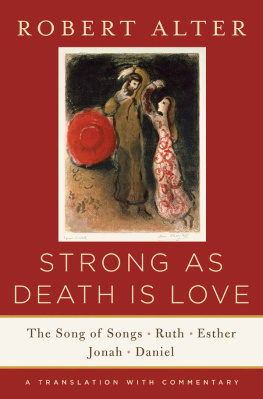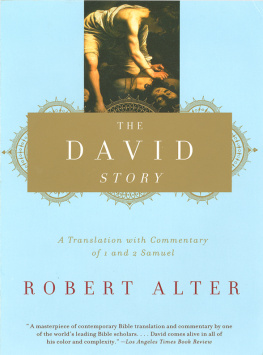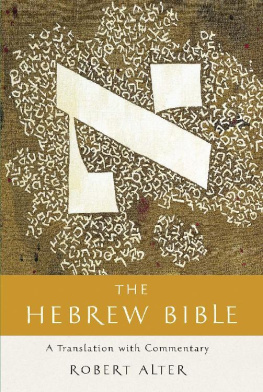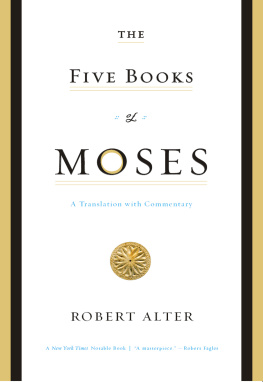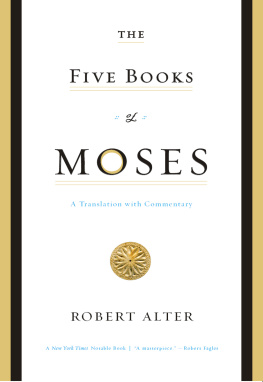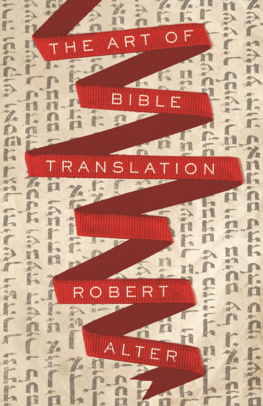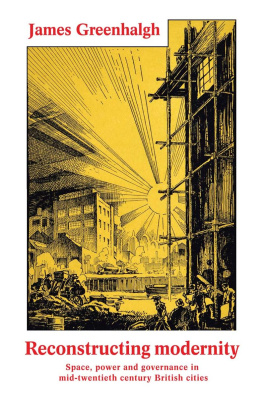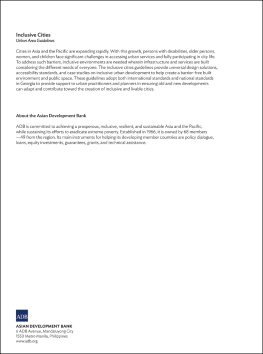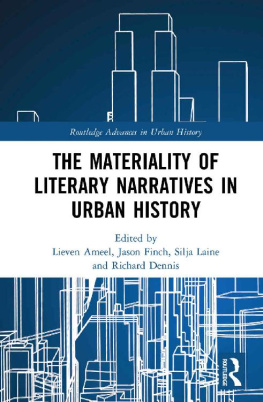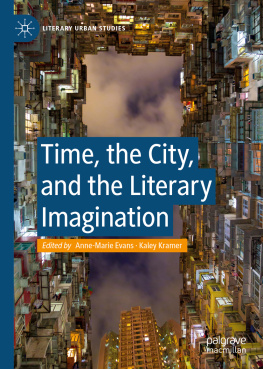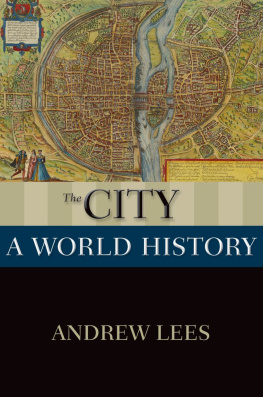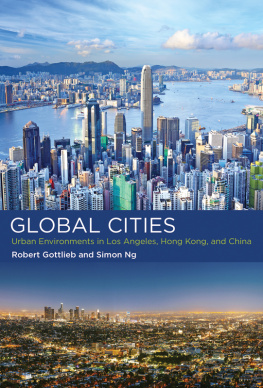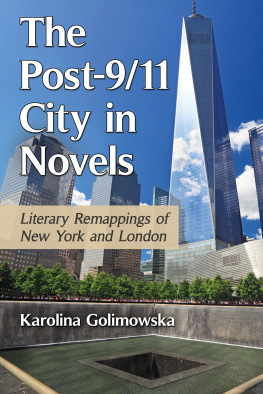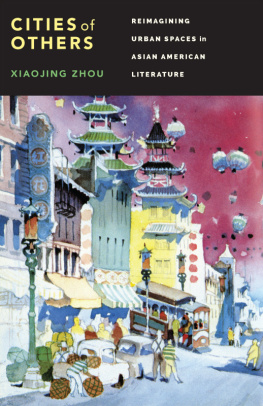Imagined Cities
Imagined Cities
Urban Experience and the Language of the Novel

ROBERT ALTER

Published with assistance from the foundation established in memory of Philip
Hamilton McMillan of the Class of 1894, Yale College.
Copyright 2005 by Robert Alter.
All rights reserved.
This book may not be reproduced, in whole or in part,
including illustrations, in any form (beyond that
copying permitted by Sections 107 and 108 of the U.S.
Copyright Law and except by reviewers for the public
press), without written permission from the
publishers.
Designed by James J. Johnson and set in Monotype Bell type by Binghamton Valley
Composition.
Printed in the United States of America by Sheridan Books.
Library of Congress Cataloging-in-Publication Data
Alter, Robert.
Imagined cities : urban experience and the language of the novel / Robert Alter.
p. cm.
Includes bibliographical references and index.
ISBN 0-300-10802-8 (cloth : alk. paper)
1. European fiction19th centuryHistory and criticism. 2. European fiction
20th centuryHistory and criticism. 3. Cities and towns in literature. I. Title.
PN3352.C5A48 2005
809.3 9321732dc22 2004026801
A catalogue record for this book is available from
the British Library.
The paper in this book meets the guidelines for
permanence and durability of the Committee on
Production Guidelines for Book Longevity of the
Council on Library Resources.
10 9 8 7 6 5 4 3 2 1
For Steve and Hannah Aschheim with affection
Contents
Preface
The intimate relationship between the novel and the city is likely to stare most readers in the face, and it has understandably been the subject of voluminous, and at times tedious, critical discussion. If the audience and the concerns of the novel have been predominantly bourgeois, and if the novel, the only major genre to emerge after the invention of the printing press, is the modern literary genre par excellence, it makes perfect sense that novels should repeatedly focus on the city, the principal theater of bourgeois life and also the form of collective existence that undergoes the most spectacular, dynamic growth throughout the modern period.
Most considerations of this large topic, however, have concentrated in one way or another on how the material realities of the city are registered in the novel. This concentration is equally evident in old-fashioned critics who navely or at least unreflectively embrace the notion of literary realism and in recent critics, whether latter-day followers of Marx or of Foucault or of both. Critics, that is, of both the old dispensation and the new are predisposed to speak about how the novel represents or reflects the reality of the city. What, they ask, can one learn from reading the novels of the era about the slums of London, the sewers of Paris, the new shopping arcades of the nineteenth-century metropolises; about such institutions as the stock market, prostitution, fashion, and the theater; about class relations, social mobility, the mechanisms of power, and the new economic pressures of urban life?
Such questions, of course, are not irrelevant to the kinds of aims that many novelists, especially in the nineteenth century, actually had in mind, with some of the writers imagining their activity as a kind of uniquely privileged form of reportage about the contemporary world. But there is a qualitative difference between journalism and fiction writing that the focus on the representation of material reality and social institutions tends to blur, and there may be inherent limits on the access of the novelistic imagination to objective, collective realities. To write a novel, after all, is to re-create the world from a highly colored point of viewinevitably, that of the novelist, and, often, that of the principal character as well. This strong mediation of an individual imagination is as clearly manifested in a novelist such as Emile Zola who claims to be a scrupulously empirical student of contemporary society as it is in a lyric novelist such as Virginia Woolf.
One decisive development in the novel through the late decades of the nineteenth century and on into the twentieth (the time span under view in the chapters that follow) is the practice of conducting the narrative more and more through the moment-by-moment experiencesensory, visceral, and mentalof the main character or characters. This general procedure, which I shall call experiential realism, can be central to the narrative even when the novelist is also minutely concerned with social and material realia. It is the intersection of the subtle deployment of experiential realism and the emergence of a new order of urban reality that is the subject of the considerations offered here of a line of novelists from Flaubert to Kafka and Joyce. The great European cities grew exponentially from the beginning of the nineteenth century to the early decades of the twentieth. (American cities also grew rapidly during this period but were much less subjected to novelistic attention, and it was a development that took place in a cultural context so different from Europes that it seems prudent not to attempt discussing both in a single framework here.) There is abundant evidence, much of it extraliterary, that this runaway growth of the city effected certain fundamental transformations in the nature of urban experience. Whatever the new objective realities, from architecture to public transportation to the economy, it felt different for individuals to live in this new urban zoneto walk the city streets, to enter into the urban crowds, to be exposed to the exponential increase of noise and bustle, to inhabit an apartment building or a tenement in the new demographic density of the city. The perception of the fundamental categories of time and space, the boundaries of the self, and the autonomy of the individual began to change. What novelists managed to be progressively more subtle and more persuasive in registering, what sets them off from journalists, is the shifting pulse of experience felt by the individual, how the mind and the senses take in the world, construct it, or on occasion are confounded by it.
The experiential realism of the novel as a searching response to the felt new reality of the European city leads me to begin with Flaubert and not with Balzac, who otherwise might seem a more obvious point of departure. It equally takes the story I am trying to tell all the way to Kafka, who might at first appear to have no bearing whatever on the novelistic rendering of any real historical city but who proves to be an instructive instance of the novels function as a seismograph of modern urban experience. In regard to literary history, this investigation begins in the late nineteenth century at a moment when one can detect, at least retrospectively, forerunners of modernism. It ends with four novels that appeared in the 1920s, at the zenith of what is now often called High Modernism. That stopping point is by no means intended to imply that little of interest in the novelistic treatment of the city has occurred since, but the 1920s do mark the completion of a certain arc of development that began in prose fiction with Flaubert (and perhaps in poetry with Baudelaire). On the historical plane, major cities in the developed world have continued to grow over the past eight decades, but at a slower rate than before, and they seem well beyond the terrific disorientation of transition triggered by the mushrooming of urban centers from the beginning of the nineteenth century to the first three decades of the twentieth. In any case, my choice of novels is plainly meant to be suggestive rather than comprehensive. These discussions are intended not as a grand narrative about the history of the novel and the modern city (by now, one is entitled to be skeptical about most grand narratives) but rather as a selective sampling that highlights one central line of development in what remains a variegated picture. I would hope that this investigation has more than antiquarian interest because I think that the line of development reflected in these books may still have urgent things to say to us as dwellers of cities in which, along with the excitements of urban life, problems proliferate much faster than solutions.
Next page

